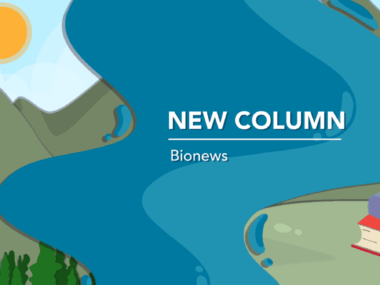Epidermolysis Bullosa Can Contribute to Esophageal Stenosis, Case Study Finds
Written by |

Epidermolysis bullosa (EB) can affect the gastrointestinal tract, leading to the development of esophageal stenosis, or a narrowing of the esophagus, according to a new case report.
The report, “A rare case of skin blistering and esophageal stenosis in the course of epidermolysis bullosa – case report and literature review,” was published in the journal BMC Gastroenterology.
EB encompasses a diverse group of rare genetic disorders characterized by skin blistering. However, EB not only affects the skin, but also can extend to the nose, ears, eyes, genitourinary tract, and the upper gastrointestinal tract.
Gastrointestinal manifestation of EB most commonly involves esophageal stenosis, caused by recurrent blistering of the esophagus that leads to esophageal scarring. The esophagus, commonly known as the food pipe, carries food from the mouth to the stomach.
Researchers in Poland reported the case of a 40-year-old man with dystrophic EB (DEB), one of four major subtypes of EB. The patient was admitted to the department of gastroenterology at the Medical University of Lublin, Poland, due to persistent dysphagia, or difficulty swallowing, during the previous two months.
Both he and his sister were the oldest documented patients diagnosed with EB living in Poland at the time.
The patient’s medical history showed that he started experiencing dysphagia at the age of 9, and then reported a further deterioration at 19. However, the dysphagia was inconstant, and the patient experienced periods without symptoms. He also experienced some mild esophageal bleeding during this time.
The man was admitted to the hospital after swallowing solid foods became painful. Upon admission, he did not complain of chest pain, and following a physical examination, he appeared comfortable. The patient had blisters, skin reddening, and crust formation on the upper and lower limbs, all characteristic of EB. He also had movement disability in the joints of his hands and a loss of his toenails.
During his hospital stay, laboratory tests did not reveal abnormalities. Interestingly, a chest and abdomen CT scan showed a thickening of the esophageal wall. Doctors attempted a gastroscopy, a procedure in which a camera is inserted down the esophagus, but the probe failed due to esophageal stenosis.
A barium swallow test revealed a narrowing of the upper esophagus. The test also showed a significant weakening of the esophageal mucous lining.
The patient was then qualified to undergo a process called endoscopic dilatation of esophageal stenosis, in which doctors insert an object into the esophagus that physically dilates it, thus reducing the narrowing. However, the patient chose not to receive this treatment and was instead treated with a proton pump inhibitor (PPI) and prokinetic medication. This treatment improved his esophageal discomfort.
The patient was later discharged in good general health. However, physicians recommended a diet based on meals with a soft consistency, an oral PPI, and prokinetic medication, with a subsequent follow-up after a month.
Overall, the team concluded, “Management of an esophageal stricture in such circumstances is based on endoscopic dilatation. However, in most severe cases, placement of a gastrostomy tube [a tube inserted through the abdomen that delivers nutrition directly to the stomach] is required. Despite great advances in medicine, a targeted therapy in the course of EB has not been established yet.”
According to researchers, “the treatment of EB patients must be based on a coordinated multidisciplinary approach.”





